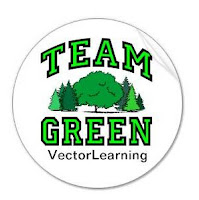
by Rumanda Young
This semester I asked my class to complete an ecological footprint assessment. An ecological footprint gives a person a measure of his or her lifestyle demand on Earth's ecosystems. The assessment outcome is an estimate of how many Earths it would take to support humanity if everybody lived a given lifestyle. Out of the entire class, I had the highest numbers of Earths.
The outcome of the assignment concerns me, as I teach courses on sustainability and feel that I do things daily (garden, recycle, compost, eat little meat) to help lower my footprint. Upon reflection, I realized travel was the culprit in my oversized ecological footprint. I admit I don’t drive the smallest, most fuel-efficient car, but I am convinced it is the travel associated with my jobs that takes up more than my fair share of Earth’s resources. My weekly commute to the university logs more than 240 miles. Also, I travel every other week for the government either by car or plane.
I dread traveling half a day and fighting airport crowds to attend a one-hour meeting that I could have attended easily via teleconference. I think it is a waste of time that could be spent with my children, but now I am realizing it is also an incredible waste of resources (both monetary and environmental). I know the time has come to adopt more sustainable ways to travel. As an important first step, I will learn how to say “no” to travel that does not necessitate face-to-face interaction. After a bit of Googling, I’ve also found a few tips (source: www.factoidz.com) on how to become a more conscious traveler:
Stay in locally-owned accommodations as opposed to hotel chains. Local owners benefit greatly from tourist support, and as a traveler you are able to eat local food and given an opportunity to take in local culture in a more intimate environment.
Visit national parks or conservation areas as part of your travel. The money you pay for such attractions is put back into protecting wildlife, habitat, and the environment.
Nature deserves our respect, so when you are done enjoying its splendor, it should be left as you found it. Leaving little evidence you were there ensures it will be enjoyed by other travelers for years to come.
Be mindful of your consumption of water, energy and the amount of waste you create. Practice the same recycling habits you would at home by using travel mugs and other reusable products.
When you shop local markets, remember this is one of the ways (and possibly the only way) local people support themselves. They work hard at their craft, and this small-scale fair trade exchange has a greater impact on their lives than on yours.
When it comes to transportation, flying imposes the biggest burden on the environment because of the fuel consumed and the emissions created. However, there is a way to offset your carbon footprint as a result of flying. By buying carbon credits that are used toward environmental efforts, you reduce your travel impact on the planet. This is a new and innovative way to promote responsible travel and is more and more widely promoted.
Finally, volunteer travel is one of the most sustainable travel practices that make a difference. There are always environmental efforts going on in various parts of the world that would welcome your time and energy, and these opportunities are a great way to learn about the culture, people and areas in most need of help.




